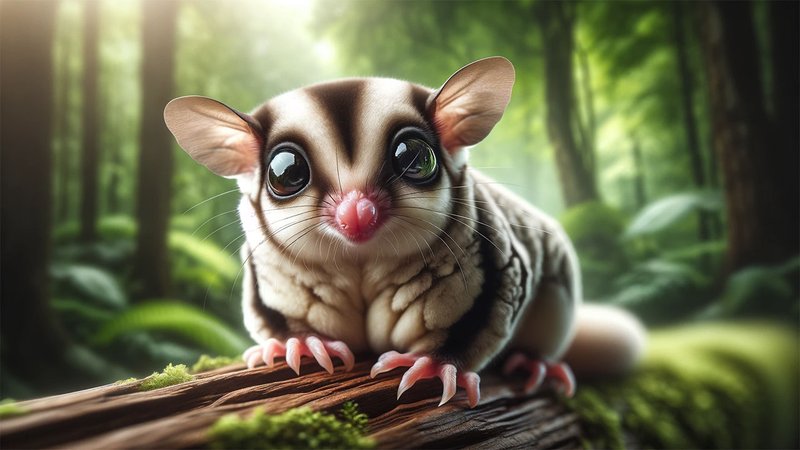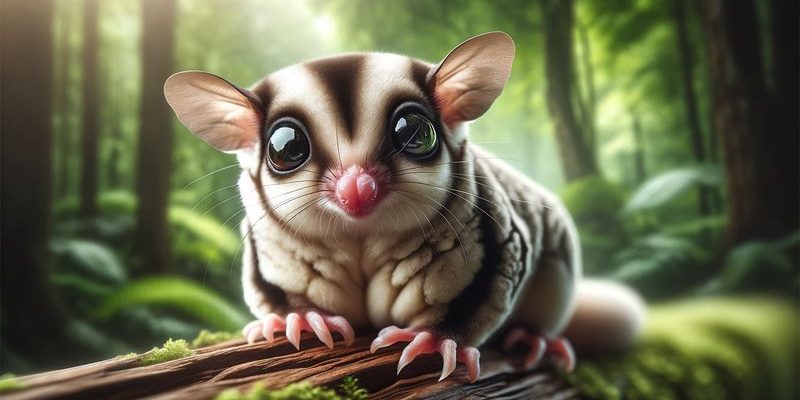
Understanding Sugar Glider Lifespan
When it comes to how long sugar gliders live, it’s not a straightforward answer. Generally, these cute marsupials can live anywhere from 10 to 15 years in a loving home. However, some sugar gliders can live even longer with exceptional care. Think of it like a plant: with the right amount of sunlight, water, and nutrients, it will flourish, but without proper attention, it may not thrive as long.
In the wild, the lifespan is shorter—often only about 5 to 7 years—due to predators, disease, and a lack of a balanced diet. This is a stark contrast to the cozy life they might have as pets. If you’re committed to providing a good environment for your sugar glider, you’re already setting them on a path to a longer life.
Factors Affecting Lifespan
Several factors can impact how long your sugar glider will live. Here are some of the most significant ones to consider:
- Diet: A well-balanced diet is crucial. Sugar gliders thrive on a mix of fruits, vegetables, and protein sources. Poor nutrition can lead to health issues, cutting their lifespan short.
- Living Conditions: A spacious cage that allows them to move around and glide can greatly enhance their quality of life. Providing plenty of enrichment activities—like toys and safe branches—can keep them engaged and happy.
- Social Interaction: Sugar gliders are social creatures. They need interaction, both with their human companions and, ideally, with other sugar gliders. Isolation can lead to stress and health problems.
It’s important to keep these factors in mind. If you’re unsure about how to create a happy home for your glider, do some research or reach out to experienced sugar glider owners for tips.
Signs of Aging in Sugar Gliders
Just like us, sugar gliders show signs of aging. Recognizing these signs can help you provide better care as they get older. Here are some common changes you might notice:
- Decreased Activity: Older sugar gliders may not be as playful as they used to be. They might prefer lounging in their favorite spot rather than gliding around the cage.
- Changes in Coat Condition: The fur of an aging sugar glider might become thinner or lose its luster. You might also notice some graying or a change in texture.
- Health Issues: As they age, they may become more prone to health problems. Regular vet check-ups become even more crucial to catch any issues early.
Stay observant about their behavior. Early detection of any changes can lead to better treatment options and a happier life for your furry friend.
Common Health Issues
Understanding potential health issues is key in managing your sugar glider’s health as they age. Here are some common problems to be aware of:
- Obesity: If their diet isn’t managed correctly, sugar gliders can become overweight. This can lead to various health problems, including diabetes.
- Dental Problems: As sugar gliders age, they might develop dental issues. Keeping their teeth healthy is important, and this often means providing chewable treats or toys.
- Respiratory Issues: Sugar gliders can be prone to respiratory infections, especially if their living environment isn’t kept clean. Good hygiene can help prevent this.
You might find it helpful to keep a log of your pet’s health changes and vet visits. This information can provide valuable insights when discussing their health with a veterinarian.
Creating a Healthy Environment
Creating a nurturing home can help extend your sugar glider’s lifespan. Here are some practical tips:
- Space to Move: Invest in a spacious cage with multiple levels and plenty of safe toys. This encourages exercise, which is vital for their health.
- Dietary Needs: Research and offer a balanced diet tailored to the nutritional needs of sugar gliders. You can consult with a vet for a proper meal plan.
- Regular Vet Check-ups: Schedule routine check-ups with a vet who understands sugar gliders. This can catch any potential issues before they become serious.
A little effort can go a long way. The healthier their environment, the longer you both get to enjoy each other’s company.
Bonding and Socialization
Bonding with your sugar glider is essential for their well-being and happiness. These little creatures thrive on social interaction. Here’s how you can enrich their lives:
- Playtime: Spend time each day interacting with your sugar glider. You can let them glide onto your hand or create fun play areas for them to explore.
- Companionship: If possible, consider getting a second sugar glider. They are naturally social animals and often benefit from having a buddy to bond with.
- Training: Sugar gliders can be trained to do simple tricks. This not only provides mental stimulation but can also strengthen your bond.
Remember, the more effort you put into socializing and bonding, the happier and healthier your sugar glider will be.
Sugar gliders can live a wonderful, long life of 10 to 15 years, but it takes dedication and care to ensure they thrive. Understanding their lifespan and aging signs helps you provide better support as they grow older. By focusing on their diet, environment, social needs, and health, you can significantly enhance their quality of life.
So, whether you’re considering welcoming a sugar glider into your home or are already lucky enough to have one, remember that your commitment makes all the difference. Enjoy the journey of being a sugar glider parent, and cherish those precious moments together!

